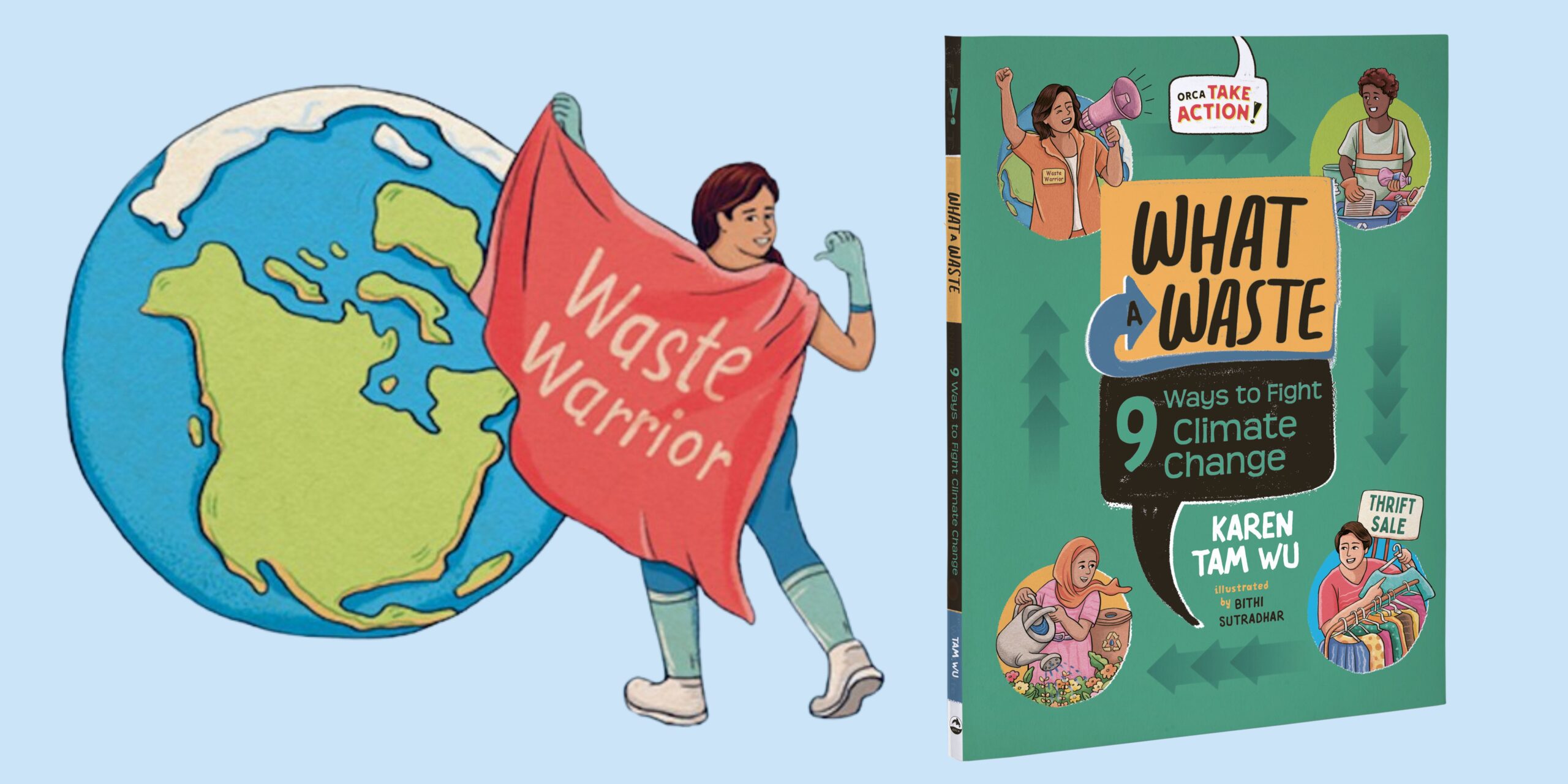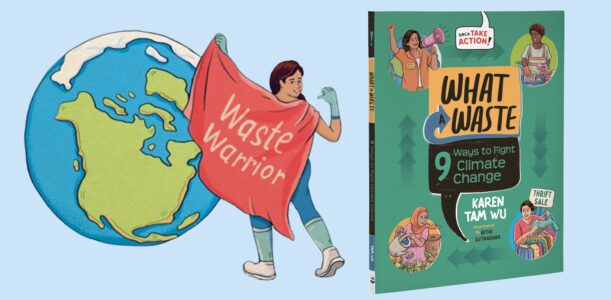Our garbage doesn’t have to be trash. Waste can be a resource and tool to help the planet. In What a Waste, young readers discover cutting-edge projects and actions they can take to reuse and repurpose garbage. Hear from the author, Karen Tam Wu, on her inspiration behind her debut book.
What inspired you to write a book about repurposing waste for middle-grade readers?
The creativity and ingenuity of repurposing waste has always fascinated me. I’m so impressed by how incredibly innovative people can figure out how to turn garbage into something that’s useable.
Re-imagining the waste we create is an important contribution to managing our waste. I think it’s critical to draw attention to how much wealthy nations and communities consume and how much waste we generate. It both heartbreaking and mind-blowing to me.
I also wanted to point out the important link between reducing our waste and reducing our impact on the climate and the planet. I wanted to give people of all ages ideas for how to contribute to the solution.
You’re currently the Houssian Foundation’s director of the Climate & Nature Program and serve on the board of directors for BC Hydro. How did you originally get into this line of work?
I have always loved adventuring in the mountains, and knew I wanted to work to protect the environment. I studied forestry and worked in forest and wilderness conservation around the world, including in northwest BC. Over time, my interest in safeguarding our planet broadened to include action on climate change and clean energy solutions.
What’s one cool or surprising fact you learned while writing this book?
Oh wow, there’s more than just one cool or surprising fact. I learned a lot writing this book. And it was some of my young friends who shared their knowledge of cool facts with me. For example, I didn’t know that astronauts reclaim and reuse all their water, including their pee. I didn’t know that plankton in the ocean produce up to half of the Earth’s oxygen. Maybe one of the most surprising things I learned is how much gold is thrown away.
Eco-anxiety among kids is on the rise. What do you hope young readers take away from your book?
I want them to feel inspired and hopeful that there are communities, businesses and people taking action to reduce the amount of waste generated and reduce our carbon footprint. I want them to know that there are also things we can each do individually and collectively, and it’s important that we DO something!

Ever since she was a kid, Karen Tam Wu has been an environmental advocate. At the age of 12, after learning about the huge amounts of water and land needed to raise livestock, Karen became vegetarian—and still is. Armed with a degree in forest conservation, Karen has spent many years working to promote and protect healthy ecosystems and the communities that depend on these ecosystems. Nowadays, Karen helps decision makers understand what kinds of programs, laws and technologies leaders around the world are using to reduce carbon pollution and create clean renewable energy. She shares these lessons with community, government and business leaders to encourage them to do the same. Karen lives in Vancouver, where she can smell cedars and the ocean, play in the mountains and ride her bike year-round.



